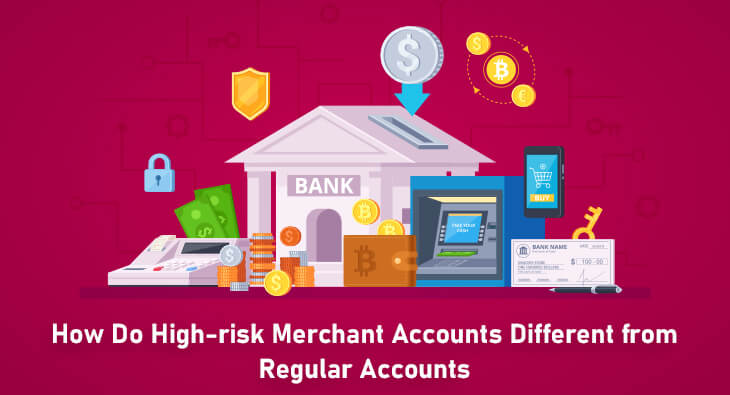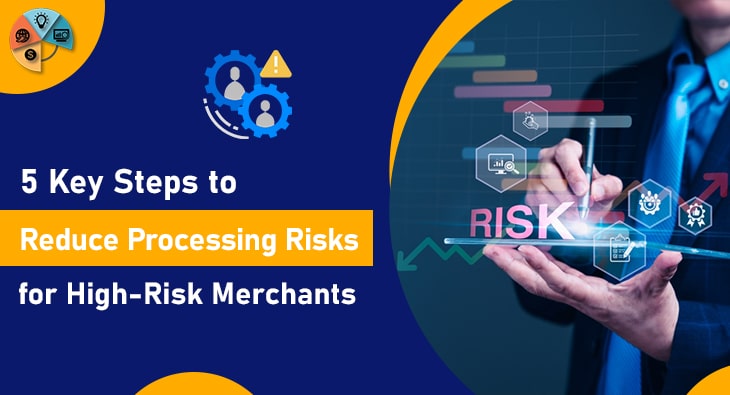High-risk merchant accounts are banking solutions designed for businesses with higher than average risks associated with their transactions. They provide additional security and protection for businesses who may not qualify for a regular merchant account. Understanding the characteristics of these high-risk accounts can help you decide if it’s the right choice for your business. In this blog post, we’ll look at the defining features of high-risk merchant accounts and how they differ from regular accounts.
Understanding High-Risk Merchant Accounts
Understanding High-Risk Merchant Accounts is essential for businesses operating in industries with higher risks associated with their transactions. These accounts provide added security and protection, catering to businesses that may not qualify for a regular merchant account. High-risk merchant accounts have specific characteristics that set them apart, such as stricter underwriting processes, higher processing fees, and rolling reserves. By understanding these distinct features, businesses can make informed decisions about whether a high-risk merchant account is the right fit for their unique needs. Stay tuned to explore more about the fascinating world of high-risk merchant accounts.
Some Related Blogs
- Get More Out of Your Merchant Account for Your Small Business
- Mastercard’s Guide to High Risk Recurring Billing
- The Essential Guide to Payment Processing for CBD & Hemp Sales
- Breaking Down the Rapid Growth of the Credit Card Industry in 2023
Industries that Typically Need High-Risk Merchant Accounts
There are certain industries that typically require high-risk merchant accounts due to the nature of their business. These industries often face a higher level of risk and uncertainty, making it difficult for them to secure a regular merchant account. Some examples of these industries include online gambling, adult entertainment, e-cigarettes, pharmaceuticals, travel, and telemarketing. These businesses deal with various factors that contribute to their high-risk status, such as a higher potential for chargebacks, legal restrictions, and regulatory scrutiny. By understanding which industries typically need high-risk merchant accounts, businesses can better assess if they fall into this category and need specialized banking solutions.
Criteria for High-Risk Merchant Accounts
High-risk merchant accounts have specific criteria that businesses must meet in order to qualify. These criteria can vary depending on the provider, but common factors include the industry type, the company’s financial stability, and its processing history.
![]()
Email us anytime!
Email customer service 24/7
![]()
Call us anytime!
Reach customer care 24/7 at +1 (727) 330-3944
Providers typically assess the level of risk associated with the business’s transactions and evaluate its chargeback ratio. Other factors may include the business’s credit history, compliance with regulations, and the products or services it offers. Understanding the criteria for high-risk merchant accounts can help businesses determine if they meet the requirements and can benefit from these specialized banking solutions.
Associated Costs and Fees for High-Risk Merchant Accounts
When it comes to high-risk merchant accounts, it’s important to understand the associated costs and fees. Due to the increased risks involved, these accounts typically come with higher processing fees compared to regular accounts. Additionally, some providers may require businesses to maintain a rolling reserve, which is a percentage of their daily sales that is held by the bank as a form of protection against potential chargebacks. While these additional costs may seem daunting, it’s important to weigh them against the benefits and added security that high-risk merchant accounts provide for businesses operating in industries with higher risks.
Advantages of Having a High-Risk Merchant Account
Having a high-risk merchant account offers several advantages for businesses operating in industries with higher risks. One key advantage is increased security and protection, as these accounts have stricter underwriting processes.

Additionally, high-risk merchant accounts provide businesses with access to payment processing solutions that they may not have qualified for with a regular account.
This opens up opportunities for growth and expansion. Moreover, having a high-risk merchant account allows businesses to cater to their unique customer base without being restricted by the limitations of regular accounts.
Overall, high-risk merchant accounts provide businesses with the tools and flexibility they need to thrive in high-risk industries.
Alternatives to paying with a credit card.
While credit cards are a convenient payment method for many, there are alternatives available if you want to avoid credit card surcharges. One option is to use cash or a debit card for your purchases. By paying with cash, you eliminate the need for any additional fees associated with credit card transactions. Another alternative is to use mobile payment apps such as Apple Pay or Google Wallet. These apps allow you to link your bank account or a prepaid card and make secure and seamless payments without incurring any surcharges. Additionally, you can look for merchants that do not surcharge customers for using credit cards. Some businesses have policies in place to provide a surcharge-free shopping experience. Finally, it’s always worth checking if a merchant offers any promotional offers or discounts for credit card payments, as these can help offset any surcharges. Exploring these alternatives can help you save money and avoid unnecessary fees when making your purchases.
Risks and Challenges of High-Risk Merchant Accounts
High-risk merchant accounts come with their fair share of risks and challenges. One of the main challenges is the potential for a higher number of chargebacks, which can result in financial losses for the business. Additionally, these accounts often face stricter underwriting processes and may have limited options for payment processors. This can make it difficult to find a provider that offers competitive rates and services. Moreover, businesses operating in high-risk industries may face legal restrictions and regulatory scrutiny, adding to the challenges they have to navigate. It’s important for businesses to be aware of these risks and challenges and take proactive steps to mitigate them.



